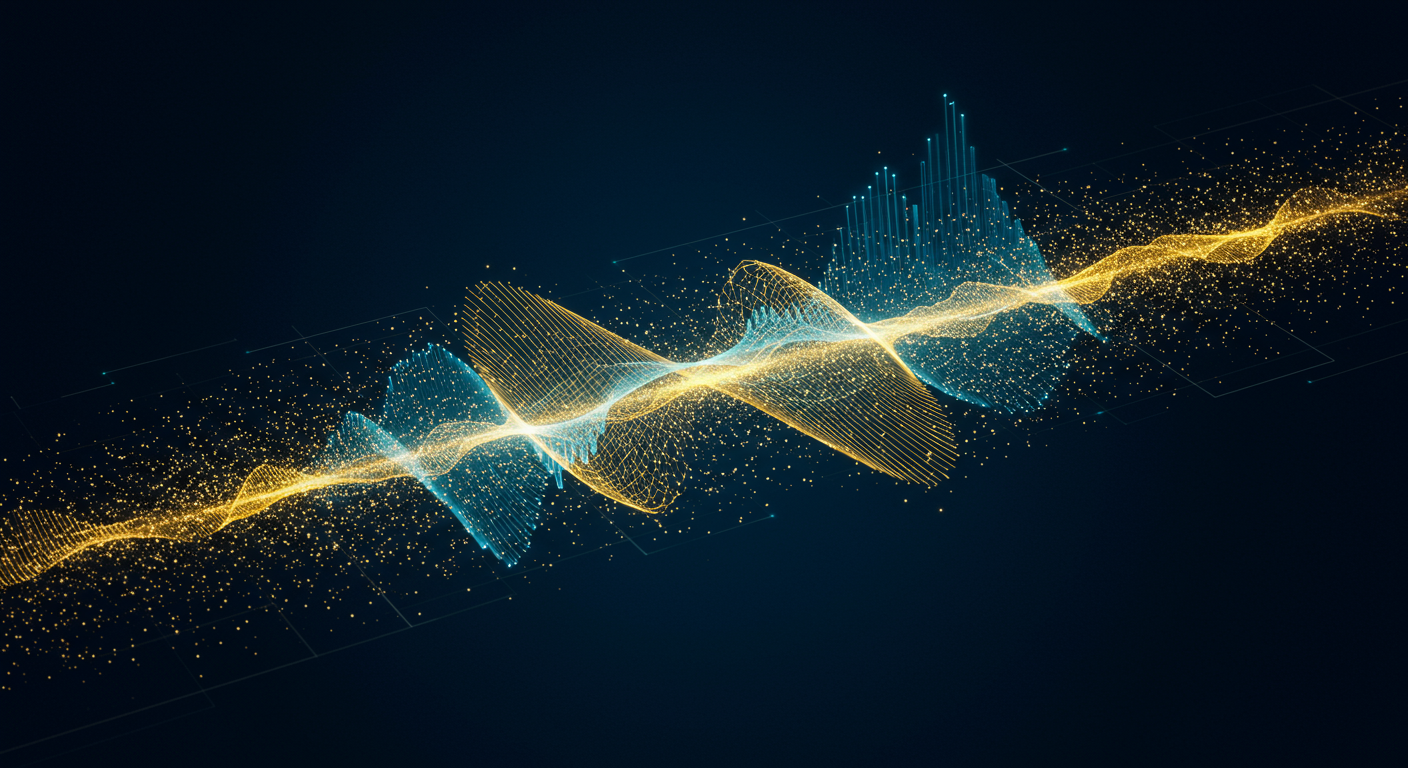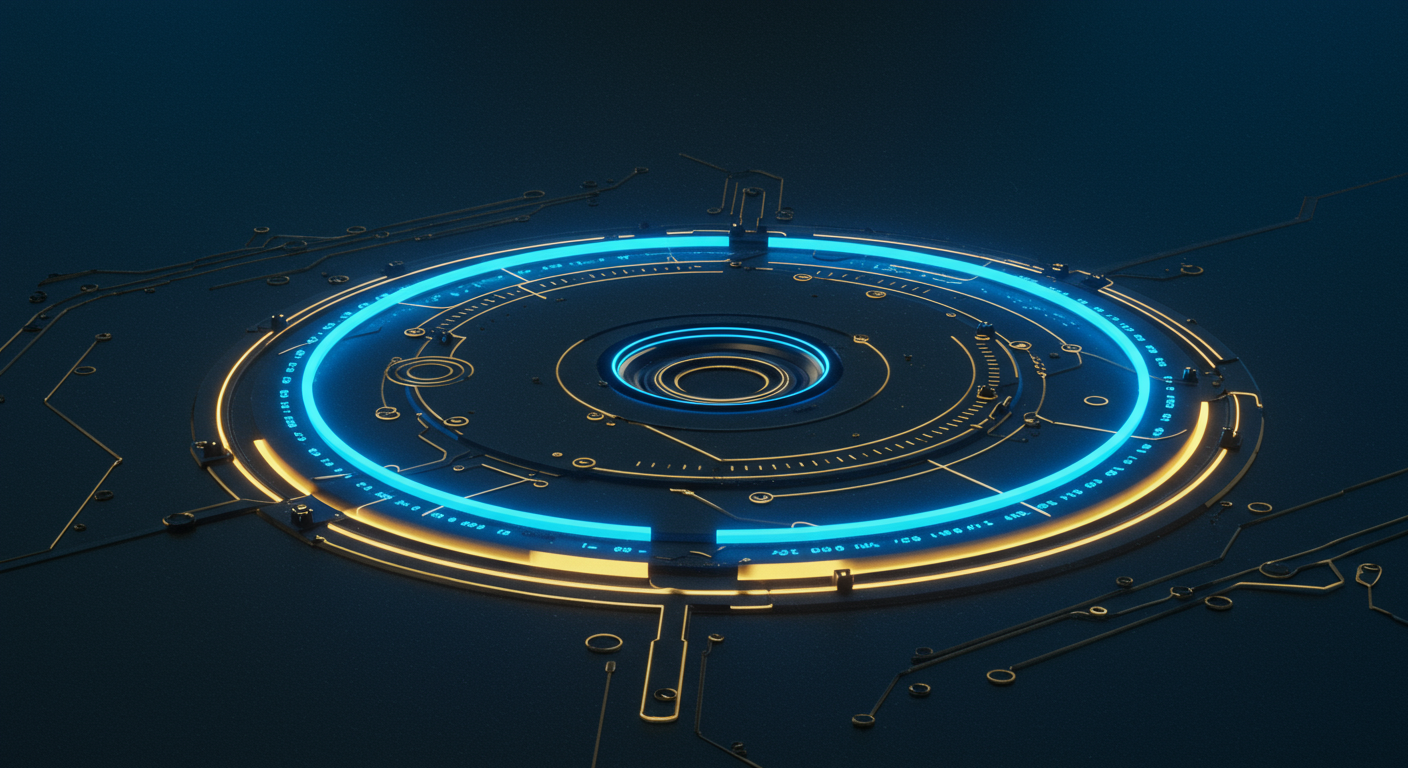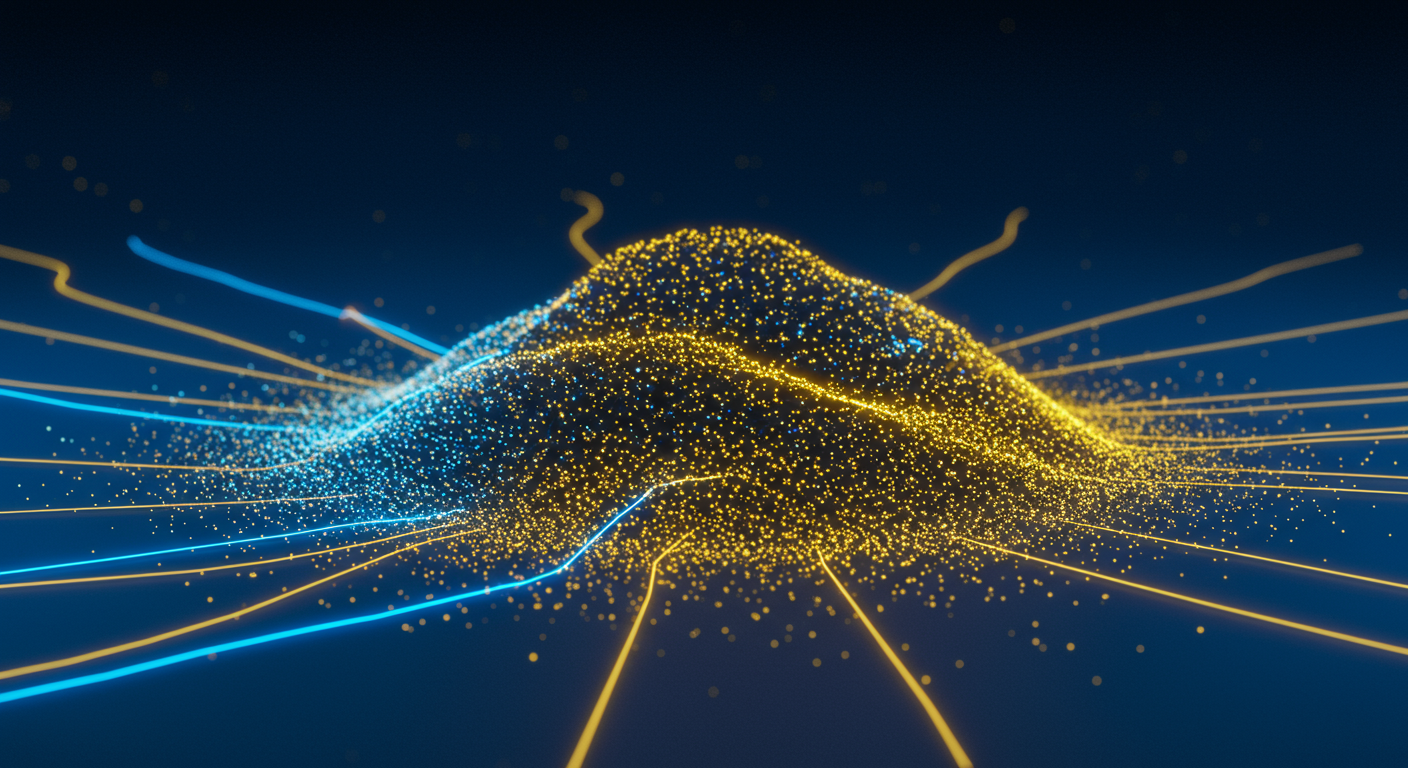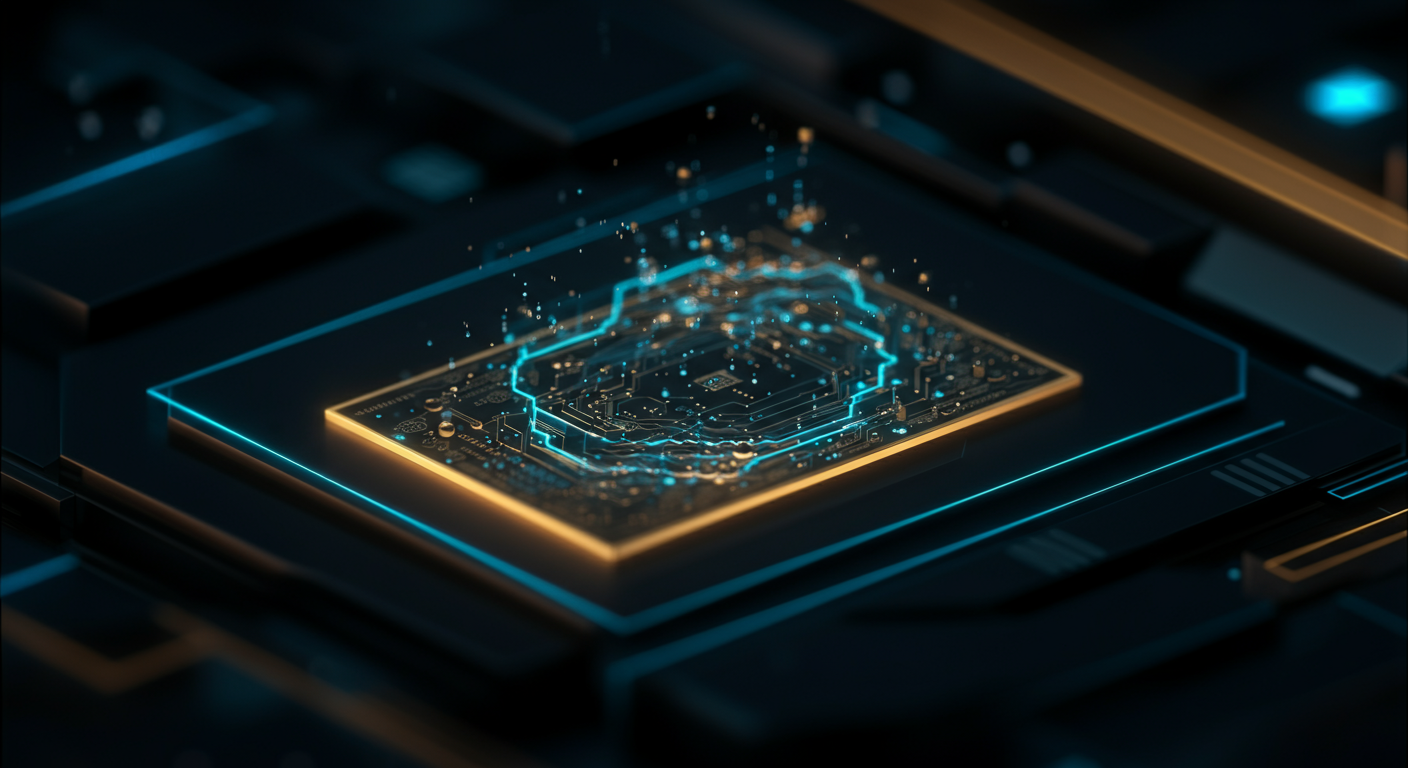Speaker Diarization Demystified: Libraries, APIs, and Practical Applications

Decoding Speaker Diarization: The Ultimate Guide
Ever wondered how AI knows who said what in a recording? That's speaker diarization in action, solving the "Who spoke when?" puzzle.
The Core Idea
Speaker diarization is like a highly sophisticated audio fingerprinting system. It analyzes audio recordings and automatically identifies and segments different speakers. Think of it as giving each voice in a conversation its own label and timeline.It's not about transcribing what's being said, but rather attributing each segment of speech to a specific speaker.
Why it Matters
This technology powers a multitude of applications:- Meetings: Automatically generate speaker-labeled transcripts.
- Customer Service: Analyze agent/customer interactions to improve service quality.
- Forensics: Aid in identifying individuals in audio evidence.
- Media Analysis: Enhance content indexing and searchability for podcasts and broadcasts. Check out the Audio Generation Tools for transcription.
The Challenges
It's not always smooth sailing. Several factors complicate the process:- Overlapping Speech: Untangling simultaneous speakers requires advanced algorithms.
- Background Noise: Filtering out distractions is crucial for accurate identification.
- Varying Accents: Algorithms must adapt to different speech patterns.
- Speaker Similarity: Distinguishing between voices that sound alike is a major hurdle.
A Quick History
Early speaker diarization methods relied on statistical models and handcrafted features. Now, AI-powered solutions using deep learning provide significantly greater accuracy and robustness. Tools such as AssemblyAI offer advanced APIs for transcription.In short, speaker diarization, or speaker diarization explained, is rapidly evolving, driven by the increasing need to analyze and understand audio data effectively.
Speaker diarization, like a digital detective, sorts out who spoke when in an audio recording.
The Feature Extraction Phase
The initial step in the speaker diarization pipeline involves prepping the audio. Think of it as teaching your AI to hear.
- Voice Activity Detection (VAD): First, Voice Activity Detection identifies and isolates segments containing speech, filtering out silence or background noise. It's like noise-canceling headphones, but for the algorithm.
- MFCCs, i-vectors, and x-vectors: Next, feature extraction pulls out defining characteristics from the audio. These characteristics could be Mel-Frequency Cepstral Coefficients (MFCCs), i-vectors, or the more modern x-vectors. MFCCs are time-tested, while x-vectors, enhanced by deep learning, often give higher accuracy.
Embedding and Clustering
Next, the magic happens – AI learns to distinguish voices.
- Speaker Embeddings: These features are then used to generate speaker embeddings - dense vector representations that capture the unique characteristics of a speaker's voice. Think of it as creating a voice fingerprint.
- Clustering Algorithms: Next, algorithms group similar voice "fingerprints" together. Common methods include:
- k-means: This partitions embeddings into k clusters, minimizing variance within each cluster. Simple, but needs the number of speakers beforehand.
- Spectral clustering: This uses the affinity between embeddings to group them, often performing well in complex scenarios.
- Hierarchical clustering: This builds a hierarchy of clusters, allowing for different levels of granularity.
Challenges and Deep Learning's Impact
Diarization isn’t always a walk in the park.
Cross-talk and noisy environments pose significant challenges.
However, deep learning has significantly boosted diarization accuracy. Techniques like:
- DNN (Deep Neural Networks): These networks can directly learn speaker embeddings from raw audio, cutting out hand-engineered features.
- End-to-end systems: AssemblyAI enables this by jointly optimizing all stages, yielding higher accuracy, and more reliable results.
Speaker diarization – figuring out who spoke when – is no longer science fiction, but a practical reality thanks to some seriously clever libraries and APIs.
Top Contenders in the Diarization Arena

Let's break down some of the heavy hitters, shall we? This isn't an exhaustive list, but it gives you a solid starting point:
- pyAudioAnalysis: This library excels in audio analysis tasks, and can be adapted for speaker diarization, especially in environments where you have control over feature extraction. pyAudioAnalysis is an open-source Python library offering a wide range of audio analysis tools, including feature extraction and classification. Its customizability makes it a great choice for researchers and developers who need precise control over the audio processing pipeline.
- SpeechBrain: Built on PyTorch, this toolkit focuses on speech recognition and speaker diarization, among other things. Its modular design makes it a breeze to integrate into existing workflows. SpeechBrain is a PyTorch-based toolkit that provides a flexible and modular framework for developing speech and audio processing applications. It simplifies the implementation of complex models for tasks such as speech recognition, speaker diarization, and speech enhancement.
- Google Cloud Speech-to-Text API: This is your go-to API if you want a robust, scalable solution managed by Google's infrastructure. It's accurate, supports a plethora of languages, and handles real-time transcription too. The Google Cloud Speech-to-Text API provides powerful speech recognition capabilities, enabling developers to transcribe audio into text with high accuracy and low latency. Its support for multiple languages and advanced features like speaker diarization and real-time transcription make it a versatile solution for various applications.
- AssemblyAI: Known for its ease of use and comprehensive features, AssemblyAI provides a simple API for speech recognition and diarization, making it perfect for developers seeking a quick, efficient solution. AssemblyAI offers a powerful and easy-to-use API for speech recognition and audio intelligence. Its state-of-the-art algorithms deliver high accuracy in transcription, speaker diarization, and other audio analysis tasks, making it an ideal choice for developers.
- Picovoice: Offering on-device solutions, Picovoice ensures privacy and low-latency, making it ideal for applications where data never leaves the device. Picovoice provides on-device voice AI solutions, ensuring privacy and low latency. Its platform enables developers to build voice-controlled applications that run entirely on edge devices, eliminating the need for cloud connectivity and enhancing security.
- Deepgram: Optimized for speed and accuracy, Deepgram offers a robust API solution that can handle large audio datasets and complex diarization scenarios. It's all about getting you from audio to insights ASAP. Deepgram is a leading speech recognition API known for its speed, accuracy, and scalability. Optimized for large audio datasets and complex scenarios, it enables developers to transcribe audio files and streams quickly and efficiently, making it a popular choice for businesses.
Library vs API: Making the Right Call
Choosing between a library and an API boils down to control versus convenience:
- Libraries: Great for customization and control, but require a deeper understanding of the underlying algorithms. Think of it as building your own car – rewarding, but demanding.
- APIs: Offer ease of use and scalability, managed infrastructure, but you're limited by the features provided. Like renting a premium car – convenient and reliable, but less tinkering under the hood.
Ease of use: APIs are simpler to implement with straightforward endpoints.
For small, research-oriented projects, a library might be perfect. For scaling production environments, an API is generally the way to go.
Picking Your Diarization Partner
Whether you're building the next transcription service or improving meeting productivity through AI productivity collaboration tools, speaker diarization is a game-changer. Choose wisely and happy coding!
Accuracy Showdown: Benchmarking Speaker Diarization Performance
Speaker diarization, the task of identifying "who spoke when," is critical for everything from meeting transcription to analyzing phone calls. But how do we measure its success? Prepare for a deep dive into the metrics and benchmarks that separate the stellar systems from the also-rans.
Diarization Error Rate (DER) Explained
The most common metric is the Diarization Error Rate (DER). DER combines three types of errors:
- False Alarm Rate: The system detects speech where there's none. Think of it as an overzealous security guard.
- Speaker Confusion Error: The system attributes speech to the wrong speaker. Awkward!
Benchmark Datasets and Results
Benchmarking different speaker diarization tools involves running them on standard datasets like LibriSpeech and AMI (Augmented Multi-party Interaction). For instance, AssemblyAI offers speech-to-text APIs including diarization capabilities.
- LibriSpeech: Focuses on read speech, providing a relatively "clean" environment. DER scores here are generally lower.
- AMI: A more challenging dataset featuring meetings with significant speaker overlap and background noise. Expect higher DER scores.
Factors Influencing Accuracy
Several factors dramatically impact diarization performance:
- Audio Quality: Noise, reverberation, and distortion are enemies of accuracy.
- Speaker Overlap: When multiple people speak simultaneously, it's tough for even the best algorithms.
- Dataset Characteristics: Datasets with diverse accents, speaking styles, and recording environments pose greater challenges.
Optimizing Diarization Performance
Improve accuracy with these tips:
- Audio Pre-processing: Noise reduction, echo cancellation, and dereverberation are your friends.
- Parameter Tuning: Experiment with different settings for the diarization algorithm itself, often through trial and error.
- Leverage Speaker Embeddings: Incorporating AI Fundamentals of speaker recognition can drastically reduce speaker confusion errors.
Speaker diarization, a cornerstone of modern audio processing, is changing how we interact with recorded speech.
Real-World Applications: Where Speaker Diarization Shines

Speaker diarization, determining "who spoke when," is rapidly moving beyond academic interest into practical applications. Let's explore where this tech really shines.
- Meeting Transcription and Summarization: Forget manually noting who said what during meetings. Tools like Otter.ai (an AI-powered transcription tool) can automatically generate transcripts with speaker labels, making meetings more productive and searchable. Speaker diarization enhances these transcripts, streamlining meeting workflows.
- Customer Service Call Analysis: Analyzing customer service calls is crucial for improving agent performance. With speaker diarization, platforms can identify which agent is speaking and extract valuable insights. Imagine using this to assess empathy levels or identify common customer pain points.
- Forensic Investigations and Law Enforcement: Forensic audio analysis often involves deciphering conversations with multiple speakers. Speaker diarization helps law enforcement accurately transcribe and analyze recorded conversations, providing crucial evidence in investigations.
- Media Monitoring, Podcast Analysis, and Content Creation: Media monitoring services can use speaker diarization to track mentions of specific individuals across various audio sources. Podcast analysis benefits from identifying guest speakers and analyzing their contributions. This also improves indexing podcasts making them more discoverable through Search AI Tools.
- Accessibility: Speaker diarization is a game-changer for accessibility. It enables the creation of accurate captions for videos, greatly assisting hearing-impaired individuals. By identifying speakers, captions become easier to follow and understand. Think of it as essential for inclusive Video Editing AI Tools.
Speaker diarization is already incredibly powerful, but the trajectory points toward something even more transformative.
Self-Supervised Learning Takes Center Stage
Self-supervised learning, where AI learns from unlabeled data, is poised to revolutionize speaker diarization.
- Currently, many diarization systems rely on vast amounts of labeled audio data, which can be expensive and time-consuming to acquire.
- Self-supervised models, pre-trained on massive audio datasets, can then be fine-tuned for specific diarization tasks, significantly reducing the need for labeled data. Consider the potential for improved Audio-Editing tools that can automatically identify and separate speakers without extensive pre-training.
The Rise of Multi-Modal Diarization
Combining audio with visual cues – multi-modal diarization – is where the future gets truly exciting.
- Imagine a system that not only analyzes voice patterns but also incorporates lip movements, facial expressions, and even body language to improve accuracy.
- This is particularly useful in noisy environments or when speakers overlap. For example, in Video-Editing, multi-modal diarization could automatically identify and label speakers in complex scenes with multiple participants.
Ethical Speaker Diarization
As speaker diarization becomes more precise, ethical considerations are paramount.
Data privacy is a growing concern, and we must ensure that these technologies are not used to identify individuals without their consent. The technology must safeguard Privacy-Conscious Users
- Future diarization systems will need to incorporate robust privacy safeguards, such as anonymization techniques and strict access controls.
- Regulation may be needed to prevent abuse and ensure that these tools are used responsibly.
Speaker diarization? Piece of cake. Let's whip up a system that'll make sorting your audio easier than separating peas and carrots.
DIY Speaker Diarization: Build Your Own Simple System
Don't let the fancy algorithms intimidate you. We can cobble together a functional speaker diarization system using readily available open-source tools and a dash of Python. It won't win any awards for speed or accuracy quite yet, but it's a fantastic way to understand the basics.
The Building Blocks
We will leverage these technologies to build out our system:- Speech Recognition Library: The
speech_recognitionlibrary handles the grunt work of transcribing audio. Think of it as your ears, converting sound to text. - Scikit-learn: This Python module for machine learning is our brains. It helps cluster the transcribed speech into different speakers.
- Python: Our language of instruction, tying the libraries together.
Code Snippet
Here’s a simplified example to get those wheels turning:
python
This is a greatly simplified example and will need significant refinement for real-world use.
import speech_recognition as sr
from sklearn.cluster import KMeans
from sklearn.feature_extraction.text import TfidfVectorizer
Load audio (replace with your audio file)
r = sr.Recognizer()
with sr.AudioFile("your_audio.wav") as source:
audio = r.record(source)Transcribe audio
text = r.recognize_google(audio)Feature extraction (TF-IDF)
vectorizer = TfidfVectorizer(stop_words='english')
X = vectorizer.fit_transform([text])Speaker clustering (assuming 2 speakers)
kmeans = KMeans(n_clusters=2, random_state=0).fit(X)
labels = kmeans.labels_print(labels)
Limitations
This is a very basic system. Factors like background noise, overlapping speech, and varying accents can throw it off. This is far from 11 labs, which specializes in AI voice applications. It also assumes you know the number of speakers beforehand, which isn't always practical.
For more robust solutions, you might want to explore specialized APIs or pre-trained models, which offer better accuracy and handling of complex audio scenarios.
Further Exploration
- AssemblyAI: Consider using AssemblyAI for more sophisticated speaker diarization.
- Learn the Fundamentals: Understanding more about AI Fundamentals will also help you build a more powerful system in the future!
Keywords
speaker diarization, audio analysis, voice separation, who spoke when, speech recognition, voice biometrics, diarization algorithms, speaker identification, automatic speech recognition (ASR), Python speaker diarization, speaker diarization API, speaker diarization libraries, audio fingerprinting, speaker clustering, turn taking analysis
Hashtags
#SpeakerDiarization #AudioAnalysis #AIaudio #SpeechRecognition #VoiceBiometrics
Recommended AI tools
ChatGPT
Conversational AI
AI research, productivity, and conversation—smarter thinking, deeper insights.
Sora
Video Generation
Create stunning, realistic videos and audio from text, images, or video—remix and collaborate with Sora, OpenAI’s advanced generative video app.
Google Gemini
Conversational AI
Your everyday Google AI assistant for creativity, research, and productivity
Perplexity
Search & Discovery
Clear answers from reliable sources, powered by AI.
DeepSeek
Conversational AI
Efficient open-weight AI models for advanced reasoning and research
Freepik AI Image Generator
Image Generation
Generate on-brand AI images from text, sketches, or photos—fast, realistic, and ready for commercial use.
About the Author

Written by
Dr. William Bobos
Dr. William Bobos (known as 'Dr. Bob') is a long-time AI expert focused on practical evaluations of AI tools and frameworks. He frequently tests new releases, reads academic papers, and tracks industry news to translate breakthroughs into real-world use. At Best AI Tools, he curates clear, actionable insights for builders, researchers, and decision-makers.
More from Dr.

